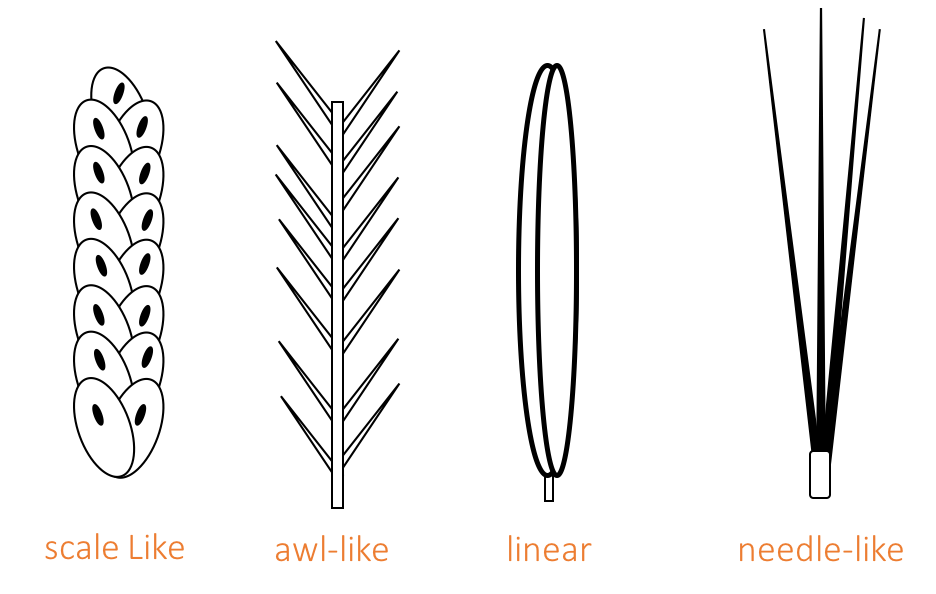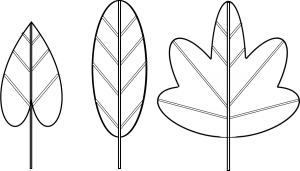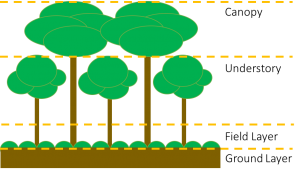Coniferous Forests
Coniferous forests are often found in cooler or colder climates and usual consist of a variety of unique trees. Commonly, these trees are evergreen, meaning they are green and able to photosynthesise all year round. The trees have softwood and are able to survive acidic soils. Spruces, hemlocks, pines and firs are the most common tress found and are made unique by either small and needle-like or scaled leaves (see below).

The trees have special adaptions to allow them to survive in the cold and in heavy snowfall. Some species are able to survive for up to 6 months under heavy snow. Some of these adaptions include:
- A waxy layer over its spines/leaves helps them survive freezing conditions and prevent water loss during this period.
- Branches are very flexible and are often angled downwards, this allows heavy snowfall to slide off onto the ground.
Even evergreens shed their needles and replace them with new ones. These needles fall to the surface and build up into a thick spongy carpet. Fungi slowly decomposes these needles, releasing nutrients for the trees but also making the soil highly acidic.
The acidic soil coupled with the reduced light levels, because of a thick canopy, leads to little to no plants growing on the surface or any layer in between. This reduces the food source for herbivores so you find only a few specific animals living within this environment. In England you tend to find insects, birds, deer, mice, squirrels, foxes, shrews and voles.
Broad Leaf Forests
Broad leaf forests are the dominate habitat of the United Kingdom and most of temperate Europe. These forests have a rich biodiversity, which includes a variety of different trees, common ones include; oaks, beeches and birches. The trees are characterised by broad leaves in a variety of shapes.

Broad leaves are characterised by:
- Flat
- Relatively broad surface
- Surface has a network of prominent veins.
These forests are common to areas which often have distinct warm and cold seasons, creating a moderate average temperature 3-15.6 °C. Trees commonly lose their leaves before the cold season, with leaves changing colour before they fall. Following the cold season leaves re-grow and the trees use the warm season for growth, reproduction and energy storage.
Broadleaf forests are now commonly man made, planted and then maintained for supporting a number of different businesses. Little is left of Britain’s ancient woodland, but isolated pockets of oak, beech and mixed deciduous trees are scattered across the continent, and dictate its biodiversity.
These forests show the four tear system expected of the typical forest. It is this system that leads to the large biodiversity typically seen in broadleaf forests. The system provides a wide variety of plants in each tear, this in turn provides the food to support a wide variety of animals(e.g. insects, squirrels, bats, mice, deer), who intern feed a variety of predators (e.g. hedgehogs, foxes, badgers). 
